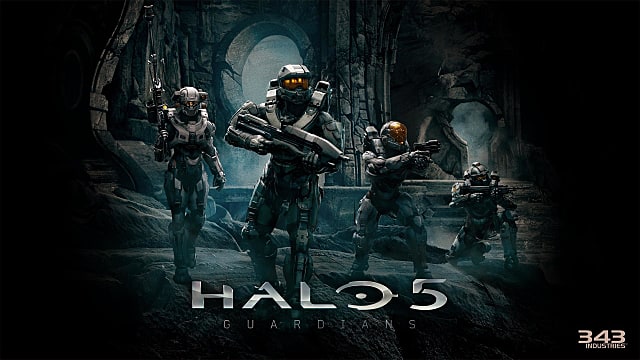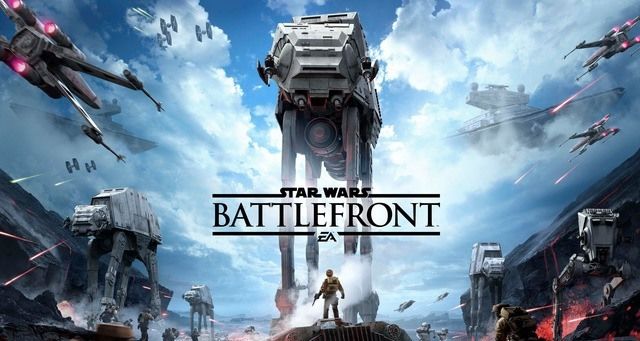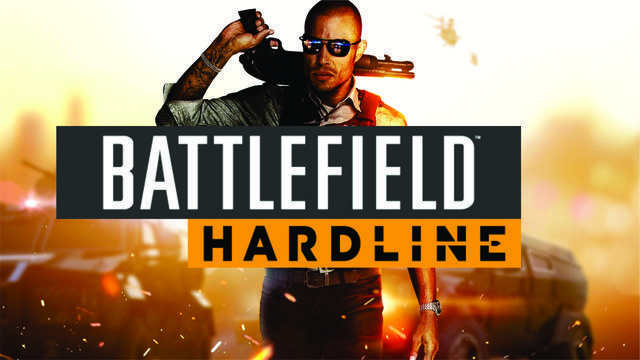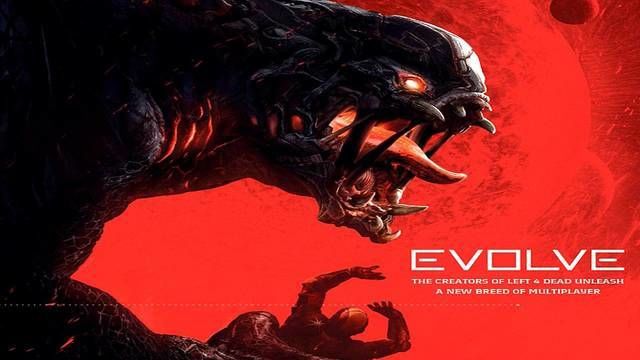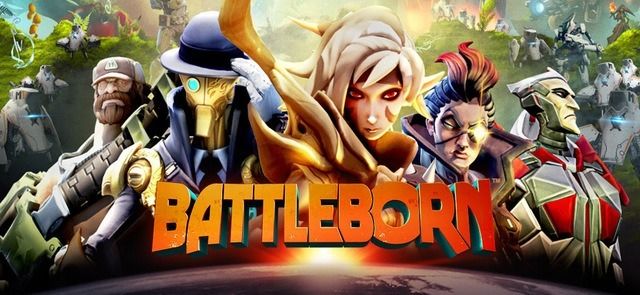First, FPS games are focusing more on minor improvements and small amounts of new content rather than vastly changing the game genre. The biggest changes aren’t new ideas; they’re better integrations of old ideas.
That brings us to our second takeaway: first-person shooters that add elements of flight simulators, third-person shooters, multiplayer online battle arenas (MOBAs), and role-playing games (RPGs) are becoming more popular as genre lines blur.
We’re taking a look at the biggest titles of 2015 to see how they exceeded expectations and where they fell short. And for the ones that have single-player campaigns, don’t worry: no spoilers.
Best titles
Halo 5: Guardians
No matter how you feel about it, Halo 5: Guardians is doing pretty well.
Video game ratings aggregators Metacritic and GameRankings gave Halo 5 an average of about 84%. None of the other major first-person shooters from 2015 averaged higher than this score, so consider Halo’s 84% as the gold standard for this year’s titles.
The game’s campaign has been highly criticized for both confusing presentation and lack of content. Considering that those are two pretty big problems, it means one of two things. Either campaigns are considered a luxury in 2015 and therefore cannot bring the score down, or the popular multiplayer mode is single-handedly holding up the game’s ratings.
That’s right: even though very few critics had positive things to say about Halo 5’s campaign, it still rated in first place for first-person shooters based on its multiplayer scale, balance, and the new Warzone multiplayer mode.
Warzone combines team fights, with AI bad guys serving as a third faction that both teams fight. Each team also spawns its own helpful AI. The concept works much more like a MOBA game, where there are neutral monsters both teams can fight, as well as minions that belong to a single team.
Basically, Halo 5 is healthy because it does both of the things we expect from FPS games in 2015: it improved on the Halo concept and adopted new ideas from other genres.
But not everything about Halo was improved. Tell your friend in the room to put down that second controller, because Halo 5 has no split screen mode.
Black Ops 3
Black Ops 3 still rated well enough to be considered a “great game,” averaging about an 80% score from GameRankings and Metacritic across all three platforms.
Many fans have come to expect Call of Duty and the spinoff Black Ops games to be only marginally different with each release. Black Ops 3 expanded to a 4-player cooperative campaign and added new customization for multiplayer loadouts. Black Ops 3 did exactly what people predicted it would, which is not such a bad thing.
In summary, Black Ops 3 focused more on perfecting the FPS genre and really getting more mileage out of next-generation consoles. It truly steered clear of going hybrid with any other video game genres, except that the customization and loadouts are still more like an RPG than a shooter.
The baby steps are probably a good choice, considering that most games are already struggling to be more like the Call of Duty series to begin with.
Star Wars Battlefront
When it came to reviews, Star Wars Battlefront got an average of 72%. Apparently the hype got this best of this title, and it backfired when players got a lot less content diversity than they expected.
The game plays much like Battlefield games, but with fantastic renditions of Star Wars sounds, styles, locations, weapons, and combat. That being said, there’s no single-player campaign and very little multiplayer customization. Battlefront is visually beautiful, polished, and smooth, but the actual experience feels incomplete. It’s as if the creators wanted to make a work of art first, then figure out how to let us play it.
Our Star Wars FPS still has its merits, though, especially if you love just goofing off in simple, large-scale multiplayer games. Remember the opening scene of A New Hope where the Stormtroopers and Rebels face off in a hallway, crouching and packed in, dying in droves and firing aimlessly? There are plenty of times when Battlefront actually looks and feels just like that, and it’s not a bad thing at all.
Casual gamers and die-hard Star Wars fans alike can enjoy Battlefront, if they’re willing to give up time with the other awesome FPS titles of 2015. That being said, Battlefront also includes third-person shooter and flight simulator elements that might just tip the scale in the game’s favor for skeptics.
Battlefield Hardline
The atypical Battlefield Hardline averages about 73% with major critics. That rating isn’t so bad, considering that Hardline feels less like a Battlefield game than Star Wars Battlefront does.
The game tried to incorporate a lot of new concepts for Battlefield that aren’t really new concepts for the FPS genre. We can’t fault Visceral Games too much, as the military game market feels oversaturated, and the incorporation of stealth helped Hardline work more like a law-enforcement game.
Hardline generally tried new combinations of old ideas, attempted to give them purpose, and came out with mixed results on implementation. Battlefield basically did the opposite of what Black Ops ended up doing.
Evolve
One of the biggest titles in terms of innovation, Evolve ranked an average of 75% from the major review aggregators.
Evolve focuses on playing both in single-player and multiplayer as either a hunter or as a monster; however, there are 4 hunters and only 1 monster. The teams are uneven and the objectives for each side are different, so the game doesn’t feel like a typical force-on-force or free-for-all fight.
The campaign’s story is light on plot, but Evolve isn’t a sequel from a major franchise and managed to hold its own simply based on fresh ideas and solid execution. This game is really the best implementation of new FPS ideas that didn’t draw entirely from other game genres. Evolve is no work of art and it’s not a crossover – unless you count playing third-person as the game’s “monster” character.
It’s just a very original FPS, and for that, it gets a very honorable mention.
Single-player campaigns
With players spending so many more hours in online multiplayer, most of us thought that story-driven campaign modes would be gone by now. Even 2014’s Titanfall basically turned the campaign into a narrative skin placed over slightly-modified online multiplayer matches.
I also take for granted that many players don’t ever even use the single-player mode in their games. I know from experience that I often don’t play or finish the single-player or co-op material for various reasons.
Star Wars Battlefront doesn’t even have a campaign, and while it has already sold well, it rated lukewarm among critics. The lack of story may have contributed to the generally mild reception, although not all critics mentioned the missing campaign as a flaw.
Halo 5 and Black Ops 3 both still had prominent campaigns, with Halo 5 focusing more strongly on the story in the marketing for the game. Perhaps there’s still a warm and fuzzy sense that gamers get from knowing that the story came first and got a lot of attention, even if that story’s execution is poor.
Multiplayer modes
Most online multiplayers modes have moved towards larger scales with more diverse game types, as well as a collection-driven RPG sense of progress.
Multiplayer has moved away from reliable, competitive gaming that seeks to rank players who perform better, like back in the Halo 2 and Halo 3 days. The cornerstone has become how much a player plays, with individual and team game performance slightly boosting the RPG “points” element.
A number of games are on the fence when it comes to competitive balance being played against character building. Battlefront makes players choose and purchase their own loadouts with very few combat options coming from the battlefield itself. On the other hand, Black Ops 3 allows for much more customization than Battlefront, tilting the game even more in favor of the devoted gamer over the skilled one.
Halo 5 backtracked more to the classic map-spawning weapons that make for the most even gameplay. If everyone starts with the same avatar, equipment, and stats, then only the best teamwork and skill will triumph. This was a deviation from Halo 4, which was definitely a Halo-themed knockoff of Call of Duty.
All in all, multiplayer games are in decent condition as far as diversity and scale, but unfortunately the competitive ranking system has almost completely disappeared.
What to expect going forward
Video game companies are still making a ton of money by simply tweaking small parts of first-person shooters with each new release. With major sequels still breaking sales records so close to their predecessors, we cannot expect production to slow down.
The bad news: the forecast for 2016 is mostly just sequels and reboots.
The good news: we can expect each new release to improve on the detail and execution, because they certainly aren’t reinventing the wheel at this point.
For 2016, Battleborn offers the most new opportunities, as it will be a first-person shooter and MOBA game. It also won’t be a sequel, repurposing, or reboot of an existing game. Battleborn is likely to set a new standard for the FPS-MOBA genre if it overcomes the risks inherent in starting from scratch.
Of course, with an open market share for role-based arena shooters like Battleborn, there are other titles jumping into the mix. Another major 2016 FPS arena title with brand new intellectual property will be Overwatch. The primary ambition of Overwatch is to make the game simple enough for a short learning curve. Overwatch’s closed beta roster of characters is currently pretty small, which the developers hope will lead to more skillful mastery, quicker onboarding for new players, and a better balance of gameplay than other arena FPS games.
We can also keep our eyes open for the Doom reboot, which should give us some of the absurdity we used to love about the originals. On the other hand, we have yet to see why they’re even doing a reboot, since the intellectual property will probably struggle to appeal to the younger audience that has little familiarity with the Doom franchise. 2016’s version may just be an exercise in nostalgia. We hope not.
As far as sequels go, you can expect Deus Ex: Mankind Divided, the sequel to Human Revolution. You’ll also see Homefront: The Revolution as a sequel to 2011’s Homefront. For those of you who wanted another Deus Ex or Homefront game, you’ll finally get your wish in 2016.
From where I stand, there’s no reason to save your video game budget right now. There are a ton of great FPS games to spend your money on depending on what you like, and they won’t be trumped by anything new for at least another year.
